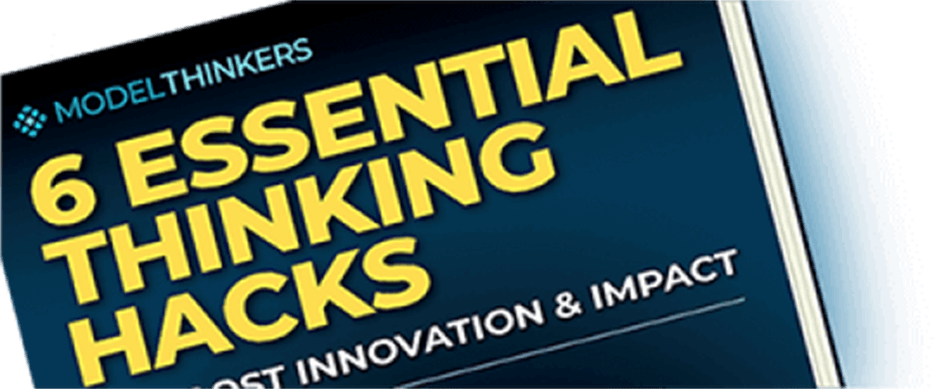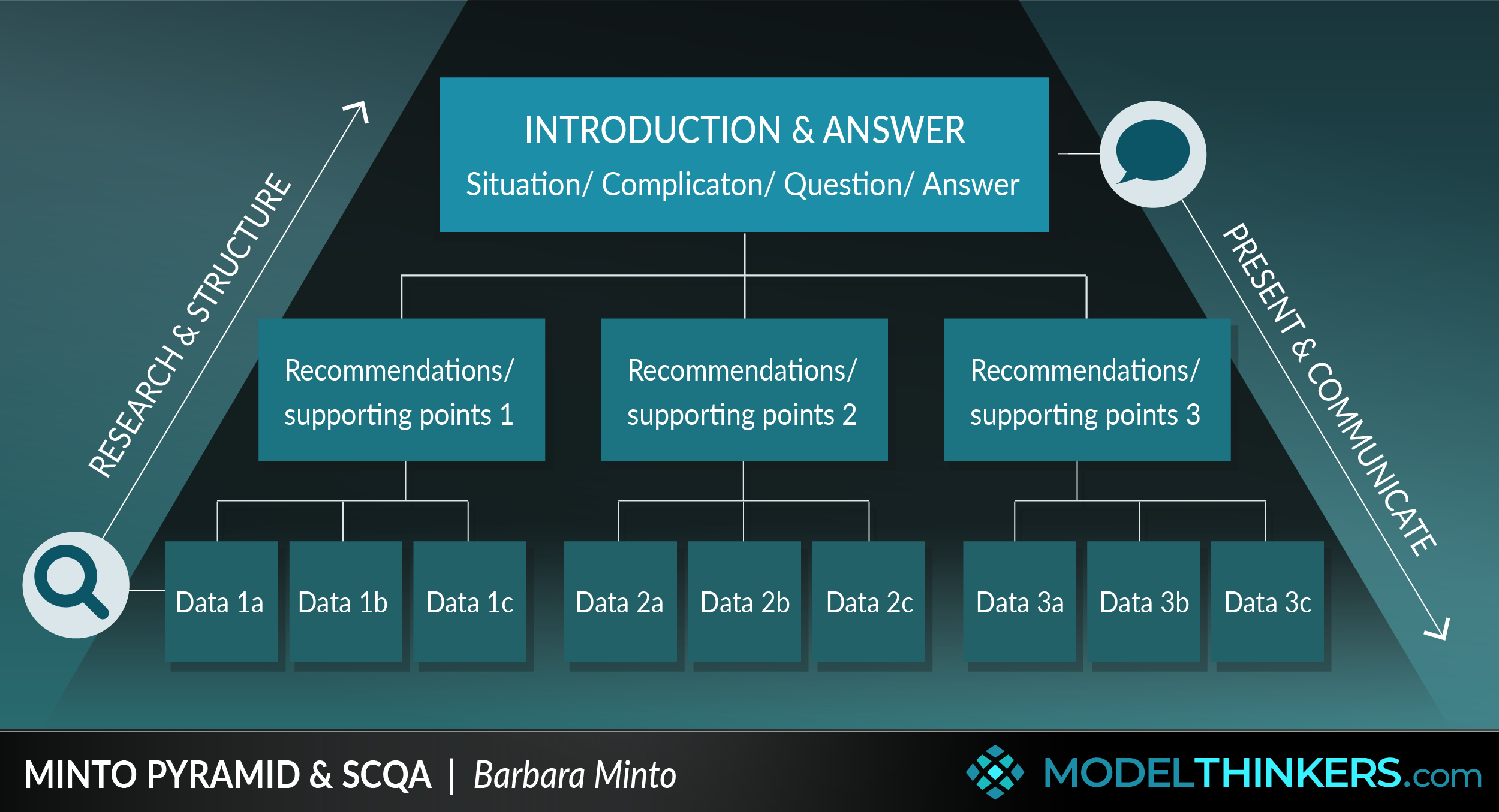Minto Pyramid & SCQA
Imagine this: you’ve spent the last few months leading a team to understand and solve a complex problem and now you’ve been given 20m to report to an executive team. Your audience has dozens of presentations packed in before and after your session, they’re busy, overwhelmed, and want to see results. So how can you best deliver what they need in a logical, meaningful and compelling narrative?
That was the question repeatedly faced by Barbara Minto, a leader at McKinsey, and she developed what has become a mainstay for business storytelling and structuring PowerPoint decks in the consulting world.
The Minto Pyramid is a way to organise presentations, communication and thinking in an 'executive friendly' way, by starting with the answer and key idea; grouping and summarising your recommendations and supporting arguments; and logically ordering your supporting ideas.
THINKING vs COMMUNICATING.
Minto recommends using this model in two separate modes. The thinking process is done from the ground up, naturally progressing from your findings to recommendations to your key answer or theme. Importantly, with this model, communicating is done in the reverse, sharing it from the top down - the opposite of your thinking and your journey.
KEY ELEMENTS.
Let’s break down the pyramid in more detail:
The introduction and answer (use the SCQA model):
This top-down approach involves leading with the answer to the executive’s question.
It’s likely to counter your natural inclination to logically build an argument and reveal your conclusion at the end.
It presupposes that you are razor clear on the problem that is being solved for and the question that you must address.
This section must clearly and concisely answer the question ‘what should we do?’ with ‘you should x’.
You can still create a story to this section to ‘hook’ your audience, Minto suggests using the SCQA model which outlines the situation or context; the complication or problem; the question; and the answer.
This section frames the rest of the presentation which can be drawn on as required.
Recommendations and supporting points:
These might be findings but are often recommendations expressed as an action statement to create a clearly defined outcome.
They would ideally provide the 'so what' or the call to action, depending on the nature of the report.
Ideally use the rule of three for supporting points for each recommendation.
Supporting data:
This is the evidence, data, findings and more detailed insights that support the previous points.
MUTUALLY EXCLUSIVE & COLLECTIVELY EXHAUSTING (MECE).
A supporting model to help develop your pyramid is the MECE principle, also developed by Barbara Pinto and used at McKinsey. MECE is a method to Divide and Conquer by identifying subsets that are mutually exclusive (ME), and collectively exhaustive (CE). MECE avoids overlapping or double counting and creates distinct, independent ‘buckets’ of work.
USE IT FOR PRESENTATIONS, CHATS, EMAILS & MORE.
Minto's Pyramid is effective for presenting and engaging with busy executives who want answers and supporting information as required and is just as effective for structuring an email or even a 2-minute impromptu conversation.
SITUATION, COMPLICATION, QUESTION & ANSWER (SCQA).
We've combined the discussion of Minto's Pyramid and SCQA in this one model entry - however, consider using SCQA as a stand-alone model to quickly describe the situation, complication, question and answer for any challenge.
INFORMATIONAL AND EFFICIENT, NOT SO COLLABORATIVE.
One note explored in Limitations below is that this approach does not particularly lend itself to co-design or collaborative engagement, so it's essential that you know your audience to assess whether this is the most effective approach.
IN YOUR LATTICEWORK.
As outlined, Minto’s Pyramid is a key communication and presentation approach in the consulting and business world and incorporates the SCQA model and MECE principle in its application. It's worth considering MECE as a connected model to Divide and Conquer. Incorporate Aristotle's Rhetoric into your messaging to make the most of tested persuasive techniques.
Depending on context and audience it might be more effective to leverage a very different communication approach in the form of the Hero's Journey. Finally, where appropriate, you might supplement this model's lack of collaboration with Design Thinking.





